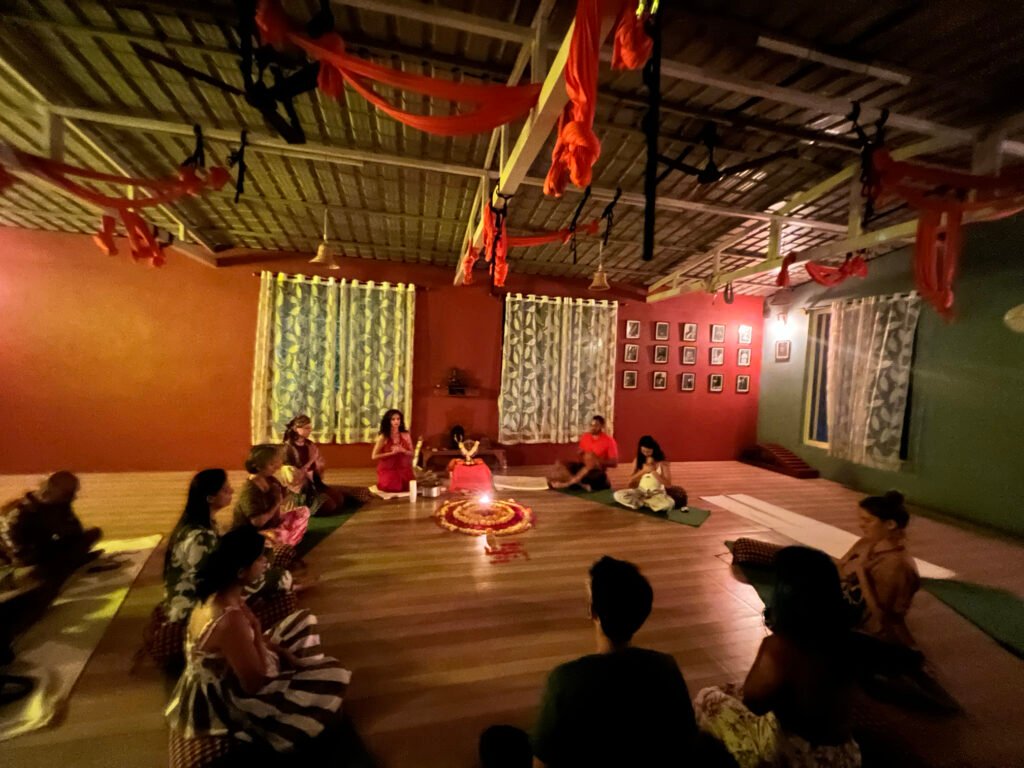Going for the first yoga class can be both intimidating and exciting. Most students have already read about the benefits of yoga, but common questions that every beginner has in mind like what to wear, Yoga etiquette, what the batch would be like, would you be able to perform the asanas well, would there be advanced level practitioners in the group too, are always at the back of the mind. What matters is that, for your first yoga class, you need not be flexible, spiritual, or for that matter, even very fit to begin with. Taking the first step matters, and then following it with consistency is what keeps it going. All one needs is an open mind, curiosity to learn, and the courage to try something new and challenging.
In a regular yoga class, you can expect the following things
Mixed class including both beginners and advanced
Yoga classes have a variety of learners coming from both beginner as well as advanced backgrounds. You should not feel intimidated or nervous if someone next to your mat is able to perform complex asanas and inversions since you are not expected to do the same. As a beginner, not only will you get a chance to feel yoga firsthand, but you will also get an instructor who will help you with modifications and eventual progressions. Maintaining safety is an essential part of yoga. It is important to remember that yoga is a personal journey and not a competition, so you should not compare yourself with anyone and focus on your progress.
You can require yoga gear as well as props
Before going to your first class it would be helpful to know what gears and props you would be acquainted with. Generally, the yoga schools and studios offer the basics, but having your own essentials can feel more comfortable and help you feel prepared. A non-slip yoga mat is essential for practicing yoga. Wearing comfortable clothing that allows you to breathe and experience a full range of motion will also be helpful, and depending upon the style of the class, you might get acquainted with props like yoga blocks, straps, and bolsters. The props support alignment and help you attain the asanas. Generally, the beginner classes focus on basic movements, simple yoga asanas, preparatory exercises, and flows like Surya Namaskar, but eventually the props will help you in mastering alignment.
Mantra chanting and traditional rituals will be a part of your course
Mantra chanting is a traditional ritual in the yogic philosophy. It sets the tone for inner focus. Generally, yoga classes start with opening and closing mantra chanting, such as Om or short verses of Sanskrit. This is not a religious practice as such, but it is an effective way of creating vibrations that sharpen the mind and calm down the nervous system. Even if you are not able to pronounce them clearly, just listening to them will help you feel powerful and prepare you for your classes. With practice, you will observe that mantra chanting will help you feel more grounded. It will enhance your yoga practice as well.
Pranayama will be a core aspect of your classes
Pranayama, also known as the yogic breath work, is a powerful tool which will be a core aspect of your yoga classes. Yoga is not just conscious flow of body movements; it is also the integration of mindful breath work along with the physical movements. Pranayama can be done both at the beginning and end of your yoga class. Simple techniques like Nadi Shodhan (alternate nostril breathing), Ujjayi breath (Victorious breath), Kapalbhati, deep belly breathing, etc., can help you regulate your energy levels, decrease stress, and prepare the mind and body for yoga.
Meditations will be essential to explore spirituality
Often yoga classes offer guided meditations. Meditation helps to cultivate stillness after movement as well as explore spirituality. A seated session or lying down meditation focusing on mindfulness, body awareness, or consciously watching the breath, can help you integrate the physical as well as energy dynamics from your yoga class. Not only will meditations help you relax after your intensive sessions, but they will also allow you to explore spirituality and find yourself.
You might feel a bit lost, and that’s ok
You should not burden yourself in your first class. Whenever we pick up any new activity or are trying to build a habit, it is absolutely normal to feel a bit lost initially. In the beginning, you might feel foreign to terms like Chaturanga or Trikonasana. You might also find it difficult to get up early and sleep on a scheduled time, following a suggested diet, or you might even lose balance in the postures. But as a beginner, you should relax and follow your instructor’s guidance. It is important to remember that everyone was a beginner once, and everyone has their own pace to pick up things.
Emotions may come up
Yoga sessions can be cathartic. Yoga is not just a physical practice and a combination of limbs and breath work; it is actually an intense exercise that stirs up emotions. When a yogi attempts a certain posture where he has opened his limbs and heart into the asana and coordinated breath work with aligned focus, it is not just the physical stretch that he feels; it is also a deep emotional release that could come out in the form of frustration, happiness, or even tears. It is a natural part of the healing process, and it is recommended to compassionately allow yourself to experience whatever comes through without judgment.
How will you feel after class?
Generally, after the first yoga class, students mention that they feel refreshed and energized. Even though they are new to the physical movements and their body is not used to the asanas, they generally feel calmer and clear-headed and deeply relaxed. It is an experience that is often welcomed by the students, and that is why they follow up and continue with the process.
Stick consistently, progress will come with practice
The first yoga class is just the beginning of a new journey and many more classes and curriculum that are to follow. It is absolutely alright if it feels clumsy, uncertain, and distorted in the beginning, but this lack of perfection should not stop you. Yoga is a unique journey and every session offers new learnings and insights. You should stick consistently and commit to the process, and eventually progress will follow. With time and practice, you will notice improvement in your flexibility, enhancement in your strength, and growth in concentration. Not only will you be able to explore different styles of yoga and command postures, but also you will find the connection between your body, breath work, and movement, and that is the ultimate goal of Yoga.
Conclusion
The most challenging part of an all-encompassing practice like yoga is not perfectly reaching your toes or mastering headstands, but it is showing up consistently on your mat by signing up for a yoga class. You have already taken the first step to realize your desire to learn yoga. What you need to do is keep showing up and keep practicing while being patient with yourself. If you’ve enjoyed your first taste in yoga and you feel like this could be your calling a Yoga teacher training course in Goa, offered by AdiYogam, will not only help you deepen your practice, but will also give you a professional teaching experience and certification that will help you in exploring a professional pathway in the world of yoga.





